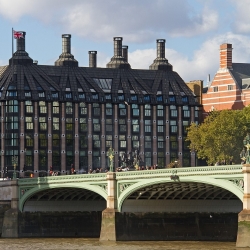July 20, 2022
Enduring problems holding back success of UK government property strategy
 Longstanding problems such as poor data pose major risks to the successful delivery of the UK Government’s property strategy, according to the National Audit Office (NAO). Central government property, valued at £158 billion, is one of government’s largest assets. It includes offices, hospitals, academy schools, jobcentres, courts, prisons and museums. The Office of Government Property (OGP) sets the strategic direction for the management of government property. The Cabinet Office has categorised properties into 12 portfolios (such as health, defence and school portfolios), 10 of which are led by a single department or arm’s-length body. The Government Property Agency (GPA) sets and implements a property strategy for the government’s office and warehouse portfolios.
Longstanding problems such as poor data pose major risks to the successful delivery of the UK Government’s property strategy, according to the National Audit Office (NAO). Central government property, valued at £158 billion, is one of government’s largest assets. It includes offices, hospitals, academy schools, jobcentres, courts, prisons and museums. The Office of Government Property (OGP) sets the strategic direction for the management of government property. The Cabinet Office has categorised properties into 12 portfolios (such as health, defence and school portfolios), 10 of which are led by a single department or arm’s-length body. The Government Property Agency (GPA) sets and implements a property strategy for the government’s office and warehouse portfolios.
In the last five years, government has launched 11 programmes to make central government property more efficient and cost-effective. For example, it has reduced the size of the general-purpose property held by central government (such as offices) by 6 percent between 2017 and 2020. The Cabinet Office is overseeing Places for Growth, which aims to move 22,000 civil servants from London to the regions by 2030. As of March 2022, 5,950 relocations (27 percent of the total) were completed. The GPA is responsible for Phase 2 of the Government Hubs programme, which involves relocating civil servants to 17 large, state-of-the-art buildings strategically located across the country.
A lack of good data is a major barrier to effective decision making about government property. The OGP does not have comprehensive, real-time information on how central government property is distributed around the country or office occupancy following the COVID-19 pandemic. The GPA is piloting ways of measuring occupancy of the offices it manages, but it has limited information about the offices held by departments. Delays in implementing InSite, a new database of central government property, have hindered the Cabinet Office’s attempts to collect more and better-quality data.
Departments do not have accurate workforce planning data on the number of employees and their location, which makes it difficult for the GPA to plan and implement departmental relocations. The impact of the COVID-19 pandemic on ways of working has made it more challenging for departments to anticipate what their future space requirements will be.
Government is taking steps to recruit property staff and develop the skills of existing staff, but many initiatives are at an early stage. Since 2020, a Property Fast Stream for graduate recruitment and the Government School of Property have been launched. Departments told us there had been improvements but that there was more work to be done. The spending review cycle makes it more complex to make the case for longer-term investment programmes. Funding for programmes, like Places for Growth, is certain only until 2025.
The COVID-19 pandemic, and government’s aim to relocate civil servants to the regions and to reduce their number, will alter government’s use of and demand for office property. Government has signalled its intention to encourage more office working, but planned headcount reductions may result in a lower demand for office accommodation.
The NAO recommends that the OGP should take prompt and decisive action to implement InSite. The OGP and GPA should discuss onboarding plans with the departments that have not yet agreed to transfer the management of their offices to the GPA, and agree on whether these plans remain achievable and represent value for money. The OGP should work with HM Treasury to consider what long-term financial settlements are available to best incentivise initiatives with the potential for long-term savings. The Cabinet Office should also work with departments to prepare workforce plans for the next five years.














